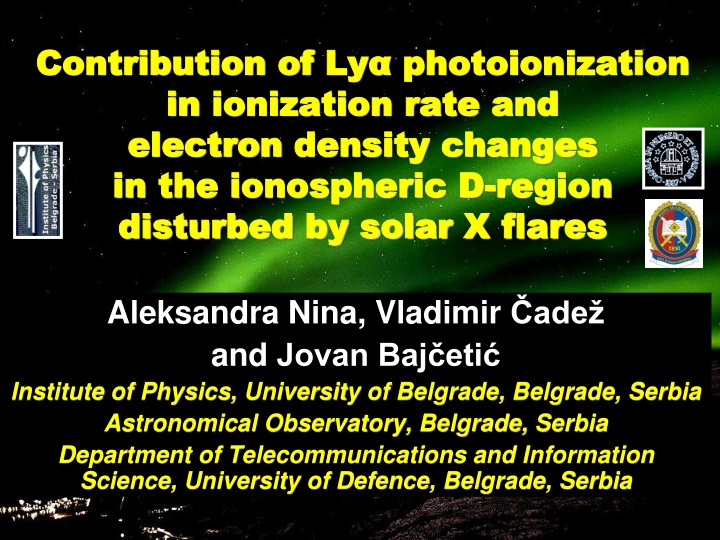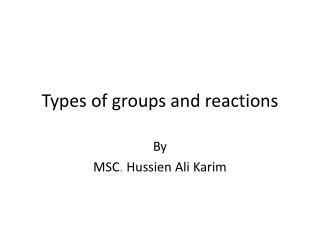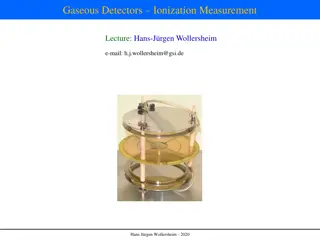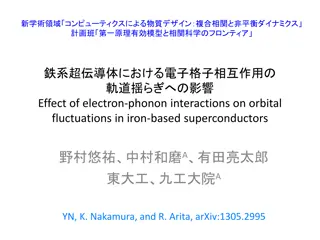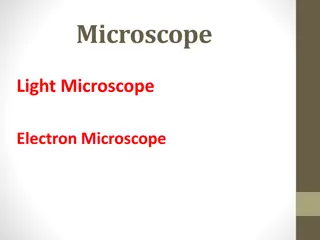Contribution of Ly in Ionization Rate and Electron Density Changes in Ionospheric D-region
Study explores how Ly radiation and solar X flares impact ionization rate and electron density in the ionospheric D-region. Research conducted by Aleksandra Nina, Vladimir ade, and Jovan Bajeti provides insights on electron density dynamics, theoretical modeling, and observations.
Download Presentation

Please find below an Image/Link to download the presentation.
The content on the website is provided AS IS for your information and personal use only. It may not be sold, licensed, or shared on other websites without obtaining consent from the author.If you encounter any issues during the download, it is possible that the publisher has removed the file from their server.
You are allowed to download the files provided on this website for personal or commercial use, subject to the condition that they are used lawfully. All files are the property of their respective owners.
The content on the website is provided AS IS for your information and personal use only. It may not be sold, licensed, or shared on other websites without obtaining consent from the author.
E N D
Presentation Transcript
Contribution of Contribution of Ly in in ionization rate ionization rate and electron electron density changes density changes in in the ionospheric D the ionospheric D- -region disturbed by solar disturbed by solar X flares Ly photoionization photoionization and region X flares Aleksandra Nina, Vladimir ade and Jovan Baj eti Institute of Physics, University of Belgrade, Belgrade, Serbia Astronomical Observatory, Belgrade, Serbia Department of Telecommunications and Information Science, University of Defence, Belgrade, Serbia
Contents Introduction: - D region - monitoring Theory and numerical modeling - theoretical study of electron density dynamic - electron density calculation Observations Results Conclusions 2
Introduction The lowest ionospheric layer D region Low ionosphere monitoring VLF radio signals - continual emission and monitoring - large analyzed space 3
Motivation and goal The most important source of ionization unperturbed period Ly radiation cosmic rays In literature, X-radiation ionization rate is usually considered as approximately the total ionization rate during the time period around the maximum X-radiation intensity Goal Development of procedure for calculation of altitude dependent Ly line contribution in ionization at time of X radiation intensity maximum during solar X flare perturbed period Solar flare lightning 4
Electron density dynamic - general form ??(?,?) ?? = ?(?,?) ?(?,?) Electron-ion recombination Ion ion recombination = `(?,?)??(?,?) Three body recombination Ly- Cosmic X ??(?,?) ??(?) ??? (?) ??? ? ? ?,????? = ? ?,? ?(?) ??? ? = ??? ? ?,? = ??? ? + ? ?,? ? ? ??(?,?) ?? = ??? ? + ? ?,? ? ? - (?,?)??(?,?) 5
??(?,?) ?? = ??? ? + ? ?,? ? ? - (?,?)??(?,?) ??? ? ? ?,? ? ? ??? ? : ??(?,?) ?? = ??? ? - (?,?)??(?,?) Electron production by solar Ly- line radiation in the ionospheric D-region, Nina A. and ade 2014, Adv. Space Res. 54 (7), 1276 ? ?,?????: ? ? , ? ?,? , (?,?) time constants (?,?) =- -??? ?,? ? ???(?,?) ??? =- (?,?)???(?,?) ???(?,?) ??? ?? ?? ? ????,????? ?? ???(?,,?????) ??? ? ?,????? = ??(?,?????) - ??(?,?????) 6 ??
Final expression for ??? contribution in ionization at X radiation intensity maximum ??? ? ? ?,????? ??? ? = ??? ??? ? ??? ? = ??? ? ????,????? ???(?,?????) ??? ??(?,?????) ?? ??(?,?????) ?? , ,???(?,?????) ??? ??? ? = ? (??? ? ,? ?,?????,??(?,?????) ) ?? 7
Electron density determination Wait s model of ionosphere: reflection height H (t) sharpness (t) ( ) t ( ) t ' ( ( ) t )h . 0 . 1 = 13 15 H ( , ) 43 10 N h t e e NUMERICAL PROCEDURE FOR WHITE PARAMETERS CALCULATION: A. Nina, PhD dissertation, 2014 Numerical program for simulation of the VLF signal propagation: Long- Wave Propagation Capability (LWPC) - USA National Oceanic and Atmospheric Administration (NOAA) Ferguson, 1998 The procedure is based on finding the combination of input Wait s parameters that gives the best matching of the recorded and modelled signal amplitude and phase changes (Grubor et al., 2008) 8
Observations 11:40 12:00 12:20 12:40 Solar X-flare - May 5th, 2010 Imax GLy 10-5 I (W/m2) X radiation intensity I registered by the National Oceanic and Atmospheric Administration (NOAA) satellite GOES-14 D - region monitoring: 23.4kHz VLF signal emitted by the DHO transmitter in Rhauderfehn (Germany) and received in Belgrade (Serbia) 10-6 10-7 30 Arec (dB) 28 26 60 Prec (o) 40 20 11:40 12:00 12:20 12:40 t (UT) 9
Results 10
, ,???(?,?????) ??? ??? ? = ? (??? ? ,? ?,?????,??(?,?????) ) ?? 107 a b GLy (m-3s-1) 106 FLER III FLER I FLER II c 105 d 104 70 72 74 76 78 80 h (km) Electron production by solar Ly- line radiation in the ionospheric D-region, Nina, A. and ade 2014, Adv. Space Res. 54 (7), 1276 11 Mitra (1977) (a), Rowe (1972) (b), Aikin et al. (1964) (c) i Bourdeau et al. (1965) (d).
, ,???(?,?????) ??? ??? ? = ? (??? ? ,? ?,?????,??(?,?????) ) ?? 80 km 78 km 76 km N (m-3) 1010 74 km 72 km 70 km 109 11:52:00 11:52:30 11:53:00 t (UT) 11:53:30 11:54:00 12
, ,???(?,?????) ??? ??? ? = ? (??? ? ,? ?,?????,??(?,?????) ) ?? 1570 72 74 76 78 80 0 d2N/dt2 (105m-3s-2) dN/dt (107m-3s-1) 10 -2 -4 5 -6 0 -8 0.8 0.8 0.6 0.6 GLy /(dN/dt) (%) rLy (%) 0.4 0.4 0.2 0.2 70 72 74 h (km) 76 78 80 13
Conclusions It is presented the theoretical study about Ly line contribution in ionospheric D-region ionization at time of X radiation intensity maximum during solar X flare. Importance of the Ly line in ionization processes decrease with altitudes at the time of maximum X radiation intensity. The small relevant values show dominant ionization of lines and continuum within X domain of electromagnetic spectrum within all considered D-region altitudes at the time of maximum X radiation intensity. 14
Thank you for your attention! 15
